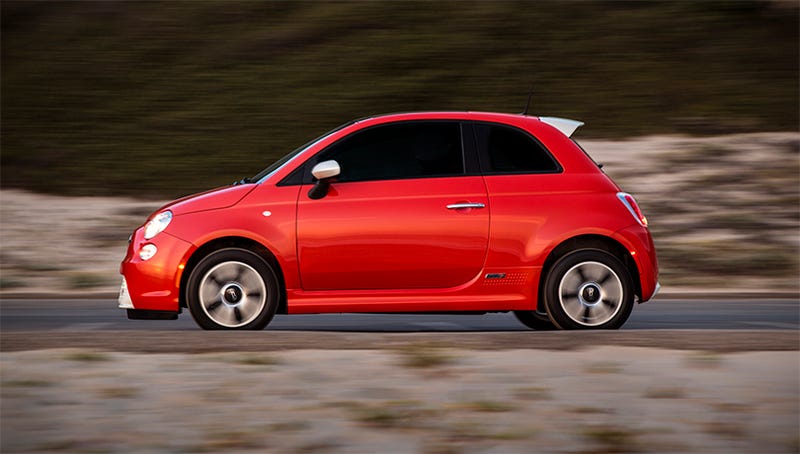Why are used EVs selling for so cheap?
A recent article online points out that used EVs are selling for very little. They seem to depreciate a lot, which is not good news for those who bought them, and not good news for finance companies that leased them.
Part of this is the tax credit for electric cars - which was like $7500 for a while - that brought down the purchase price. Of course, you could argue the purchase prices were padded by that amount, as dealers know the buyer is paying $7500 less, and thus there is headroom.
The secondary buyer doesn't get this bump, so the incentive is gone. And maybe the market for these cars is overstated. And since they are out of warranty, where do you get them fixed? Oh, yea, that.
But even assuming all that, the depreciation isn't as great as you'd think. According to NADA guides, a three-year-old Fiat 500e electric car has the following values:
Values
Print
Rough
Trade-InAverage
Trade-InClean
Trade-InClean
RetailBase Price $5,825 $6,775 $7,550 $9,375 Mileage (25,000) $1,250 $1,250 $1,250 $1,250 Total Base Price $7,075 $8,025 $8,800 $10,625 Options: (change) Price with Options $7,075 $8,025 $8,800 $10,625
This may sound like a big drop from "$30,000 new" that the author postulates, but he is comparing new prices of a 2017 model - retail prices - to the new prices of a 2014 model. Also, from what I am hearing from my local KIA dealer (Kia sells an electric SOUL - another car made to generate high mileage ratings to satisfy the EPA CAFE standards - which will likely be lowered in the next few months, so goodbye electric cars!) it is hard to sell these types of electrics, as they have very limited range (the Soul going about 85 miles, and I doubt the Fiat goes much further).
So like most electric cars today, they are a good second car for commuting and getting groceries, but not a replacement for the family SUV used to go on vacation to Disney World.
A likely sales price, new, was less than $30,000. With the $7500 tax incentive, the actual price was probably closer to $20,000 maybe even less. Base price on a regular Fiat 500 in 2014 was around $17,000. And yes, leased cars have a sales price - leasing is not "renting" a car, but buying it under a contract to sell it back to the dealer after X number of months.
If we use the 50%-every-five-years formula for depreciation, you can see that the used car retail sales prices are about in line with this, perhaps slightly lower. The author of the piece compares wholesale prices of used 2014 models to retail prices without tax incentives of 2017 models to claim 80% depreciation in three years. This is, to say the least, a little disingenuous.
So the pricing is not far out of line. And the "low mileage" is not really unexpected - electric cars, being local commuting vehicles, tend not to be driven far. We drive our truck on vacation every year about 7,000 to 10,000 miles. That ends up being the major mileage (and the least wear) we put on it. Take that away from a "normal" American car, and you cut the annual mileage in half.
And electric cars are going to be popular with people near cities - with short commutes. If you are driving 50 miles one-way to work, a car with an 85-mile range is not a good choice.
But why the big spread between wholesale prices ($4000!) and retail ($10,000)? The answer is simple: Electric cars are still a hard sell - a niche market - and thus a dealer who takes one on will have it sitting on the lot for a long, long time, before he can sell it. Plus, since most used car dealers don't know what to do with electric cars, they will have a hard time even keeping it charged.
A used car dealer specializing in electric cars might make a go at this - probably near a big city, preferably on the Left coast. Sounds like a business opportunity to me!
But don't assume that the low prices of the Fiat (which in general has a horrible quality reputation) will apply to a used Tesla. The author of this article is using selective numbers and comparing apples to oranges to make a point that really doesn't exist.


